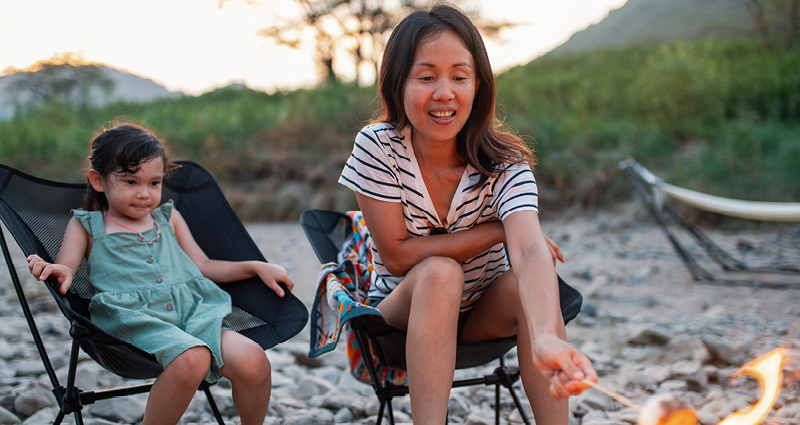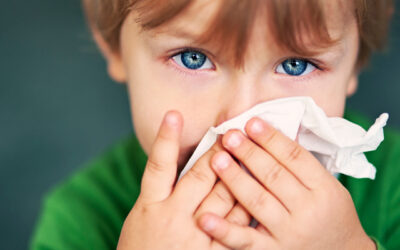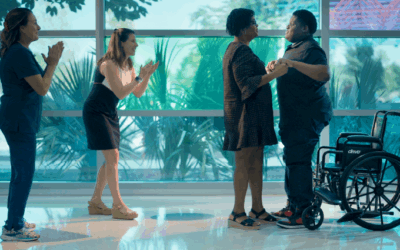Summer brings cookouts, campfires and family fun, but it also brings an increased risk for burns and fire-related injuries. Knowing how to prevent burns and what to do if one happens can make all the difference.
“An easy way to prevent burns is to create a kid-free zone around anything hot,” says Reuben Battley, MD, adolescent medicine specialist with Our Lady of the Lake Children’s Health.
Keep children at least three feet away from grills, fire pits and other heat sources, and be ready to act if an accident occurs.
Set Clear Safety Expectations
Before the grill is lit or the marshmallows come out, take a minute to talk to your kids about what’s safe and what’s off-limits.
Let younger kids know what not to touch and where they should stand.
For older kids, consider age-appropriate tasks with guidance — like helping prep food but not tending the fire.
Tip: Treat fire safety like pool safety. Set firm rules and watch closely.
Maintain a Safe Distance from Heat
Whether you’re roasting marshmallows or flipping burgers, it’s easy for kids to wander too close to the action. But even brief contact with a hot surface can cause serious injury.
To keep kids safe around heat:
- Set clear rules about a “no-go” zone: 3 feet is the minimum.
- Use chairs, cones or visual markers to help younger kids remember where it’s safe to stand.
- Supervise children closely whenever fire or heat is involved — even if it’s just a sparkler or warming tray.
“The best way to prevent burns is to keep a safe distance between children and any source of heat,” Dr. Battley says.
Use Safety Equipment and Setup
The setup around your grill or fire pit matters. Small changes can prevent big injuries.
- Always grill on a flat surface away from overhangs or play areas.
- Use grill guards or screens to create a physical barrier.
- Have a fire extinguisher or bucket of water/sand nearby just in case.
- Keep matches and lighters stored out of reach even if you think your kids know not to touch.
Cool Burns with Water, Not Ice
If a burn happens, your first move matters. Run cool (not cold) water over the area for five minutes to soothe the skin and limit further damage.
Do not use ice, butter, oils or home remedies. These can make things worse.
After cooling gently cover the area with a clean, dry cloth. Avoid popping blisters or applying creams unless instructed by your healthcare provider. Keep watch for signs of infection like redness, swelling or pus.
Know Burn Severity and When to Seek Care
Burns are classified by severity. Knowing what to look for can help you decide when it’s safe to treat at home and when it’s time to go straight to the ER.
Dr. Battley explains:
- First-degree burns are red and painful (like sunburn).
- Second-degree burns involve blisters and more intense pain.
- Third-degree burns may look pale, white or charred. They might not hurt due to nerve damage.
If a burn is deep, covers a large area or affects the face, hands or genitals, get emergency care immediately. And any signs of pale or charred skin? Don’t wait. Head to the nearest ER.
Know When to See a Doctor (Even Later)
Sometimes, a burn seems minor at first but worsens over time. Watch for increased redness, swelling or pus; fever or chills; and pain that doesn’t improve after a day or two.
If you’re unsure, reach out to your child’s pediatrician. They can help you assess if the burn needs medical care.
Don’t Forget Other Summer Burn Risks
While open flames get most of the attention, other summer staples can also cause burns.
On the playground, slides, monkey bars and metal surfaces can get dangerously hot in direct sunlight.
Before strapping your child into their car seat, do a quick hand-check of the buckle for heat.
After sun exposure, outdoor water sources can become uncomfortably warm or even scalding. Test the temperature before bath time or rinsing off.
Keep Summer Fun and Safe
With just a few extra precautions, your family can enjoy everything summer has to offer while avoiding burns and emergencies. Set up your space with safety in mind, stay nearby and engaged, and know what to do if something goes wrong.




